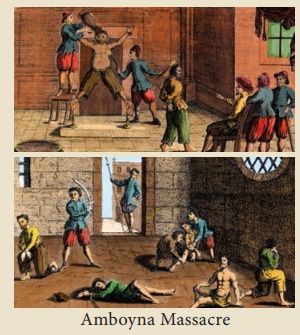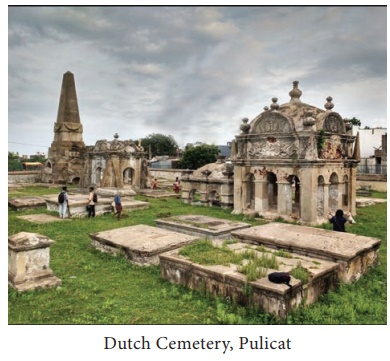Arrival of Europeans and the Aftermath - The Dutch | 11th History : Chapter 16 : The Coming of the Europeans
Chapter: 11th History : Chapter 16 : The Coming of the Europeans
The Dutch
The Dutch
The first Dutch expedition to the South East Asia
was in 1595 by a trader (Jan Huyghen van Linschoten), a merchant from
Netherlands who lived in Lisbon. There were several companies floated by the
traders and individuals to trade with the East. The state intervened and
amalgamated them all and created a Dutch East India company in 1602 [known as
the United East Indies Company (in Dutch: Verenigde Oost-Indische
Compagnie-abbreviated to VOC). The newly created company established its hold
over the Spice Islands (Indonesia). In 1641 the Dutch captured Malacca from the
Portuguese and in 1658 the Dutch forced Portuguese to part with Ceylon. The
Dutch were successful in Spice Islands but they suffered reverses in India at
the hands of the British.
The Amboyna Massacre – twenty
servants of British East India Company, Portuguese and Japanese were tortured
and killed by the agents of Dutch East India Company at Ambon Island in
Indonesia in the year 1623.

Dutch in Tamil Nadu
The Portuguese who established a control over
Pulicat since 1502 were overthrown by the Dutch. In Pulicat, located 60
kilometers north of Chennai, the Dutch built the Castle Geldria. The remains of
this 400 year old fort can be seen even now. This fort was once the seat of
Dutch power. The Dutch established control of Masulipatnam in 1605 and they
established their settlement at Pulicat in 1610. The other Dutch colonial forts
and possessions include Nagapattinam, Punnakayal, Porto Novo, Cuddalore
(Tiruppathiripuliyur) and Devanampatinam.

Pulicat served as the Coromandel headquarters of
the Dutch East India Company. Diamonds were exported from Pulicat to the
western countries. Nutmeg, cloves, and mace too were sent from here to Europe.
A gun powder factory was also set up by the Dutch to augment their military
power.
One less known fact about the Dutch is they were
involved in slave trade. People from Bengal and from settlements such as
Tengapattinam and Karaikal were brought to Pulicat. The Dutch employed brokers
at Madras for catching and shipping slaves. Famines, droughts and war that
resulted in food shortage led to the flourishing of the slave trade.
Wil O Dijk, a Ph.D. Scholar at Leiden
University in one of her research papers noted that the passenger list of
slaves transported in VOC ships within and from the Bay of Bengal from June
1621 to November 1665 showed a total of 26,885 men, women and children – of
which 1,379 died. She further wrote that the export of Coromandel slaves surged
during a famine caused by the Nayak rulers of Thanjavur, Senji and Madurai,
after the fall of Vijayanagara empire.
A subsequent invasion of the Bijapur army led to
the destruction of fertile agricultural lands of Thanjavur pushing more people
into slavery. This time (1646) around 2118 slaves, mostly drawn from places
situated along the coasts like Adirampattinam, Tondi and Kayalpattinam.
Related Topics